Honeycomb by Any Other Name is Just as Sweet
I am poised to publish a pattern for Grand Honeycomb pillow shams (awaiting the final eagle-eyed perusal by Véronique Perrot – stellar weaver, colorist and tech editor), and in response to a question from @eroticmacrame on IG, I wanting to talk about Honeycomb.
Insert gratuitous pic of Bee Blanket – structurally nothing to do with honeycomb, but couldn’t help myself.
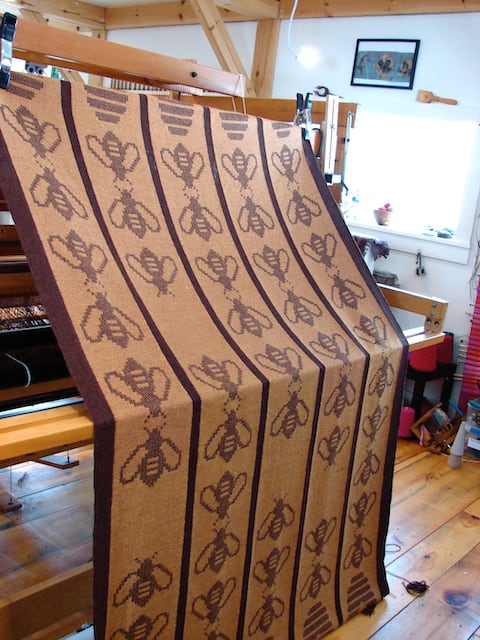
Bee Blanket woven in Summer & Winter
Honeycomb isn’t really a structure. According to Madelyn van der Hoogt, it is,
“a term we use to describe a cloth in which some threads wiggle around others to make wavy shapes. Usually, alternate groups of warp threads weave plain weave while the other (alternate groups) don’t weave at all. When this is preceded and followed by wefts that weave plain weave with all the warp threads, these two wefts outline the plain-weave cells.”
Traditionally, something like this:
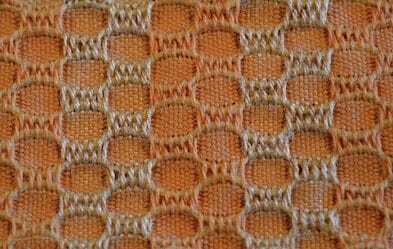
And the nomenclature is pretty fuzzy. The Brits use honeycomb to refer to what we know as waffle weave, and cell weave is another very broad term for many of these interlacements that is often used in Scandinavian weaving books.
I have woven honeycomb on many threadings (it is doable on most block threadings that allow you to weave true plain weave in each block), overshot, block doubleweave, dimity, etc.
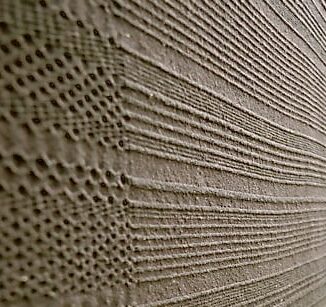
dimity threading woven in dimity stripes and honeycomb
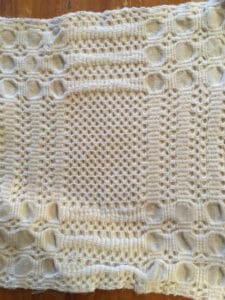
dimity sample woven using a draft from Ute Bargmann❤️
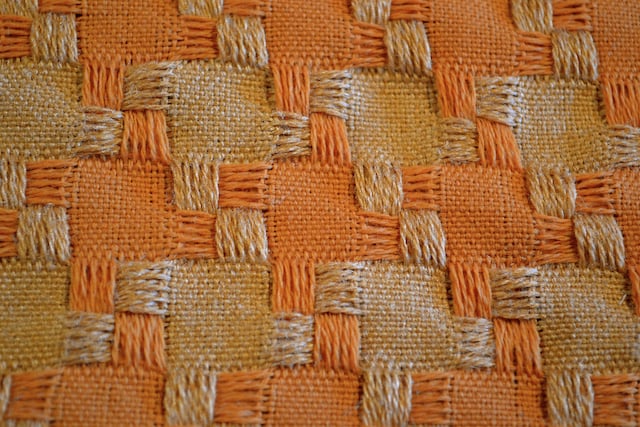
Draft for a exploded houndtooth scarf (houndstooth is not a structure – this would prob be a large scale lace)

this honeycomb is woven on the above (houndstooth) threading
The draft I used (adapted to the American drafting system, and treadled in several variations) for the pillow shams is a structure that I originally saw in curtains hanging at the Vävstuga weaving school. Becky Ashenden and I then adapted it for yardage for a class called Nordic Deflections.
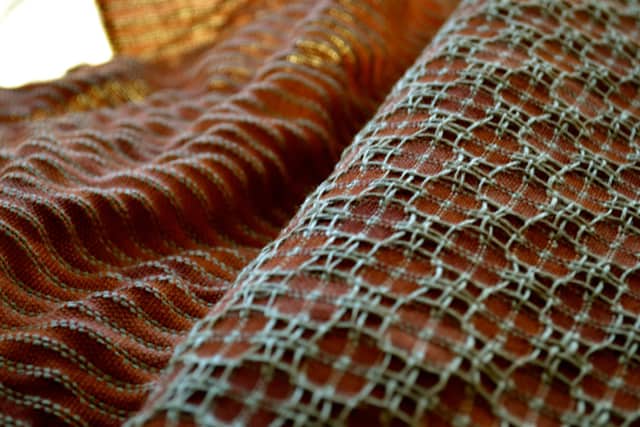
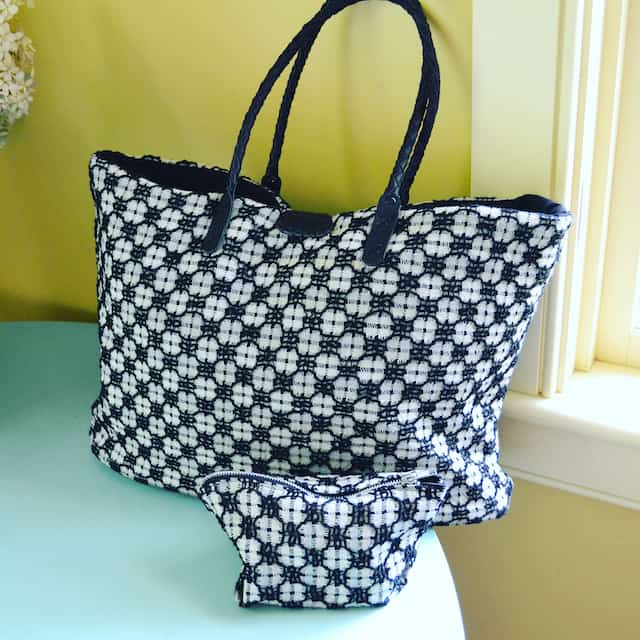
The draft (in the Swedish style) is published in the Book Vav and Weave by Mariana Erikddon & Kerstin Lovallius (Jan 1, 2008), but I have seen it in draft books by Malin Selander and Sharon Alderman as well. Sharon Alderman’s book Mastering Weave Structures: Transforming Ideas into Great Cloth also has a draft for this honeycomb variation (below) as well as a few others that will give you some idea of the variety to be seen in how this can be drafted and woven.
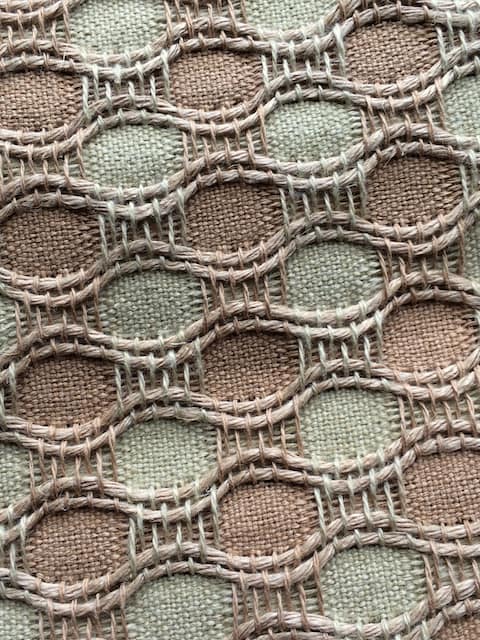
draft from Sharon Alderman’s Mastering Weave Structure
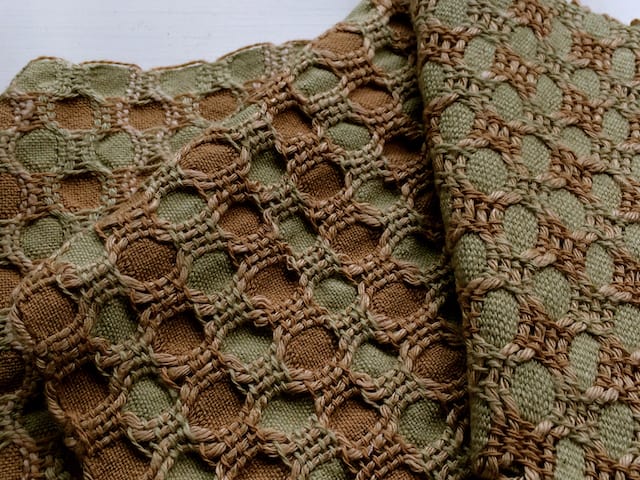
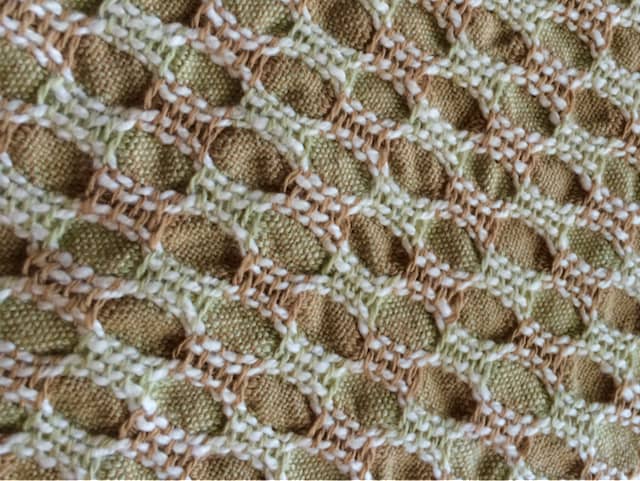
But, I wanted to plug the notion that we really can’t let ourselves as weavers be hemmed in by the (often confusing) nomenclature when it comes to structure and interlacement. We really need to observe what is (and isn’t) happening in the cloth. For example, we may have learned that threading 1,2,3,4,5,6,7,8 is an 8-shaft twill, but until we observe the tie-up and treadling, we really have no idea what the cloth is going to be. That threading can yield and 8-shaft twill (2/2, 1/3, 4/4, fancy), but it can also yield waffle, crepe, collapse, mini deflected double weave, mini block doubleweave, etc.
I am a huge fan of learning as much as possible about structure including the standard terminology and how my illustrious foreweavers worked on defining and categorizing various structures, but I do think that we sometimes limit ourselves by looking at drafts as already finished things. I am not talking about inventing or re-inventing structures (pretty hard given the 12,000 (😳😳) year history of humans messing with thread). I am speaking of feeling free to play around without worrying too much about whether we are “really weaving (insert structure)”, but instead looking at the cloth you are weaving and assessing based on things like, is it stable, what kind of hand does it have, is it cloth I want or shall I change a few things. We can then go back and ask ourselves, “what did I just weave?”, and there may be a defined structure that works or it maybe something that falls a little bit in the cracks.
And I have a few questions for the crack dwellers. Is it honeycomb without the outline weft? Maybe, but the similarities (some blocks weaving pw while adjacent blocks float) are intriguing, and I could weave it as honeycomb.
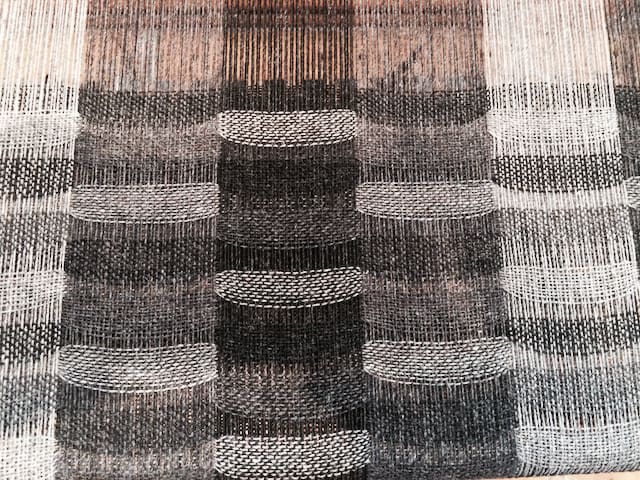
block doubleweave variation first seen on the blog of Andreas Moeller
Is it still honeycomb, if I tie-down the crazy long floats to make it reversible?
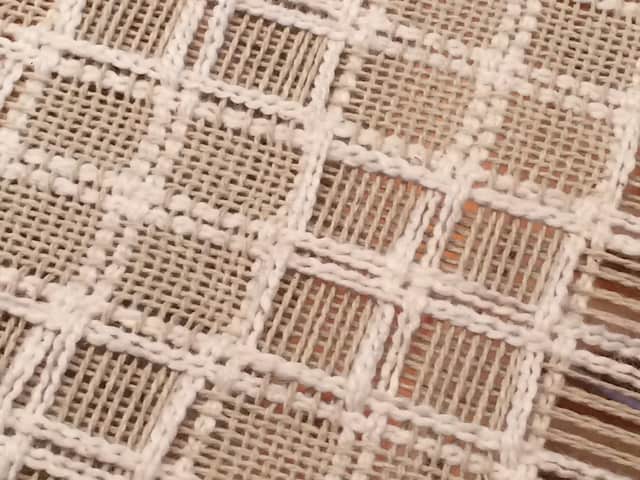
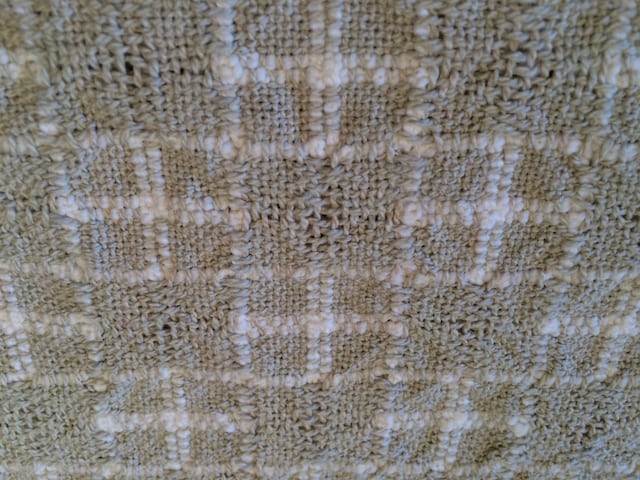
Is it honeycomb if it is turned Ms & Os (weaving plain weave in one block while the adjacent block floats(ish) and it has an outline.
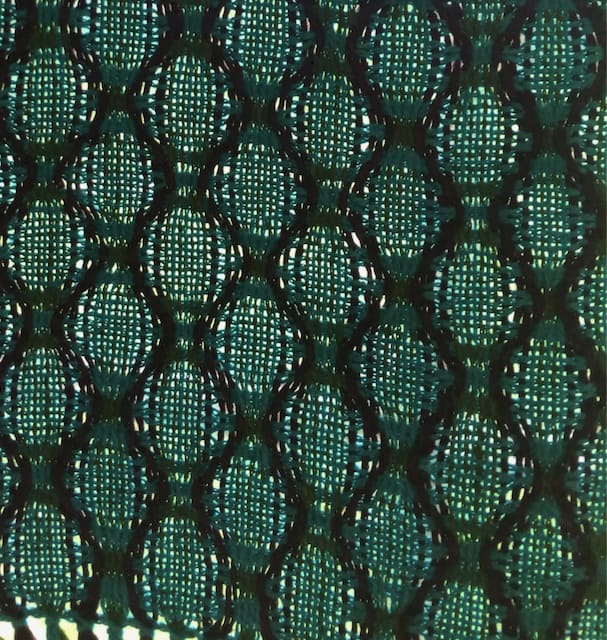
Is it honeycomb if it is a wall in Minneapolis?
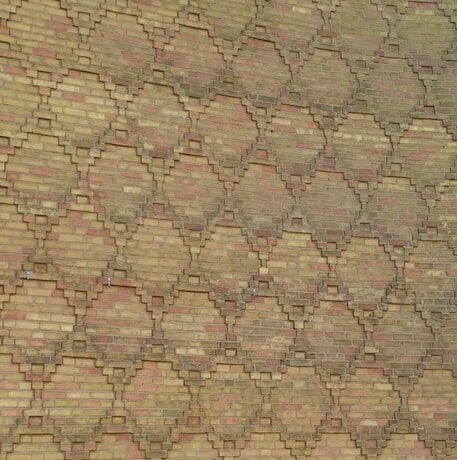
And here are some pix of the pillow shams with treadling variations that include warp float stripes of various lengths, and spider weave
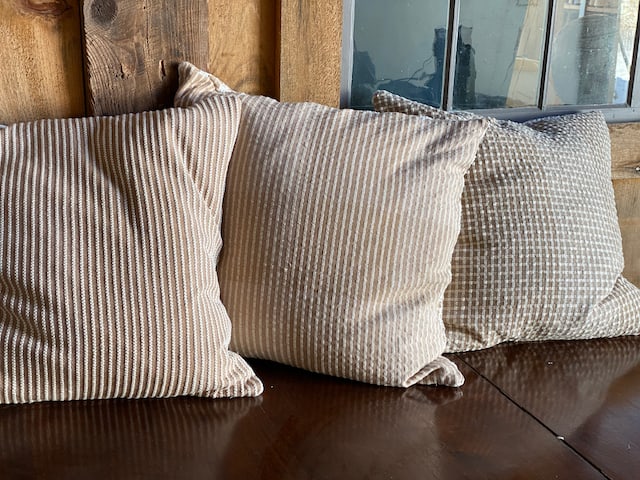
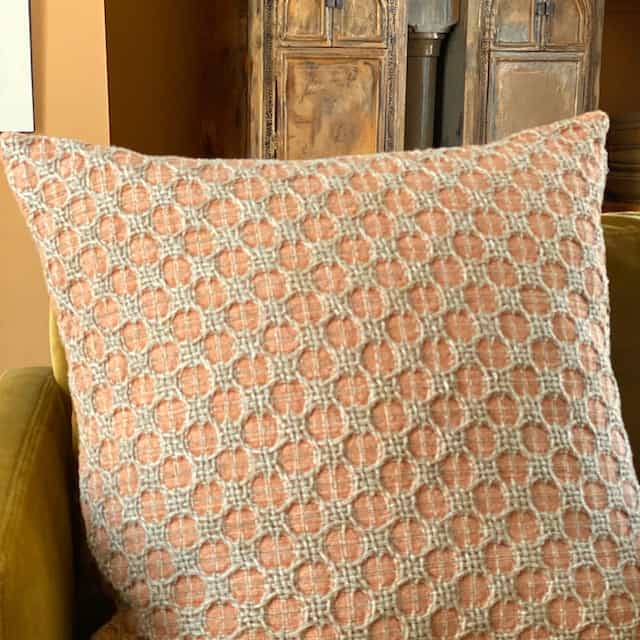
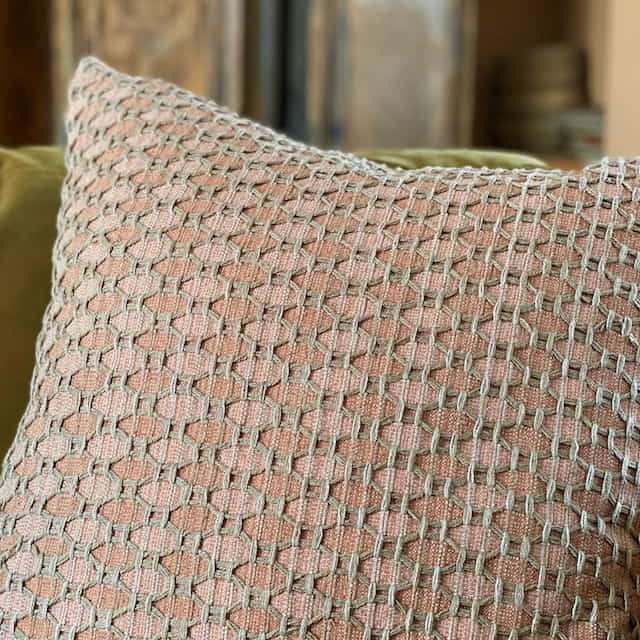
a spider weave variation woven on the honeycomb threading . . . honeycomb? I think not
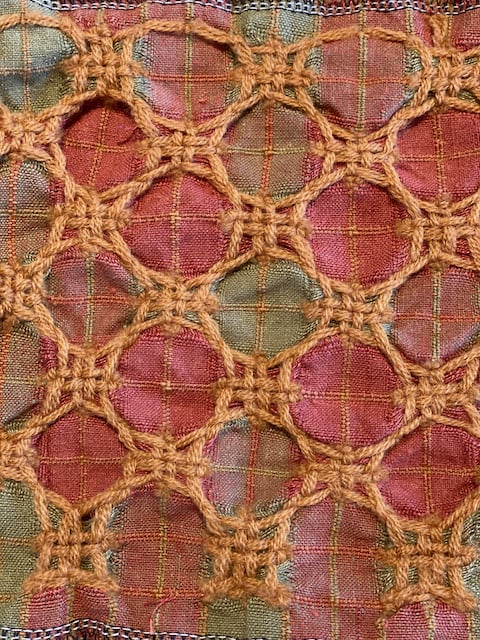
Another of the same draft but using Silk City 7,000 ypp linen and mulesing free wool (soon arriving in Handwoven’s yarn lab for your perusal)
And I hope, I will be sampling from the sweet, sweet honeycomb (family) for years to come, and maybe I will have more answers than questions in the future.

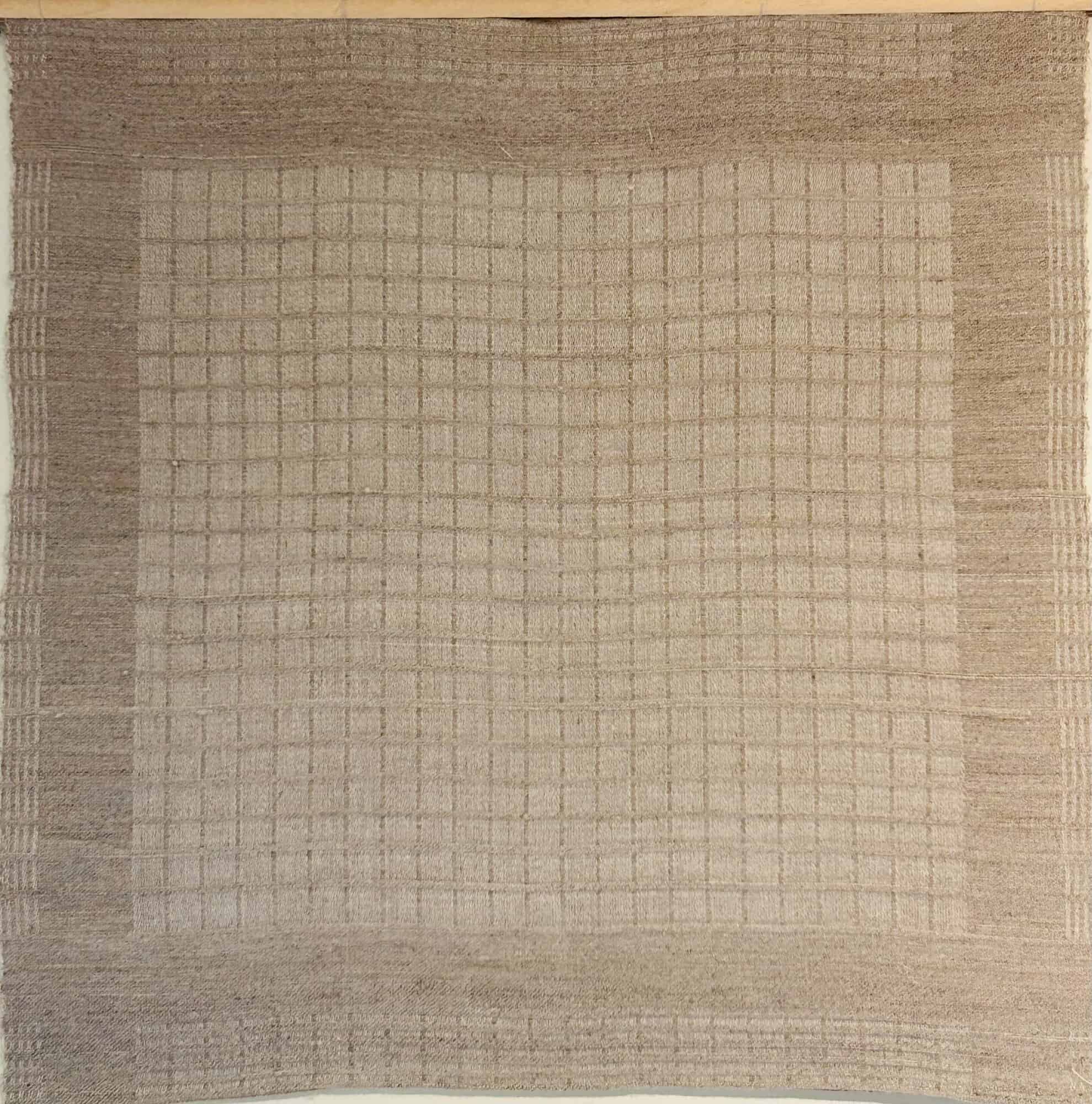
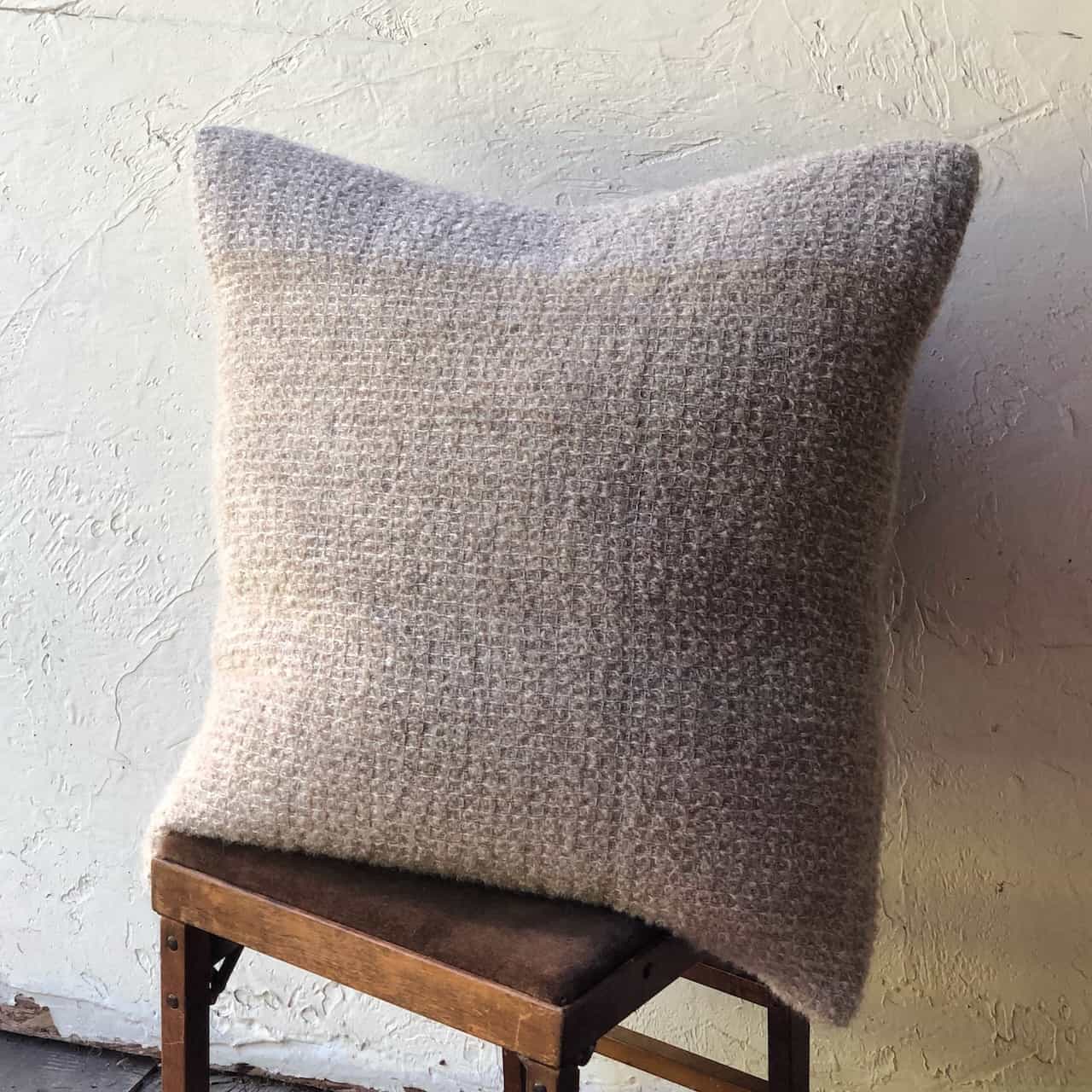
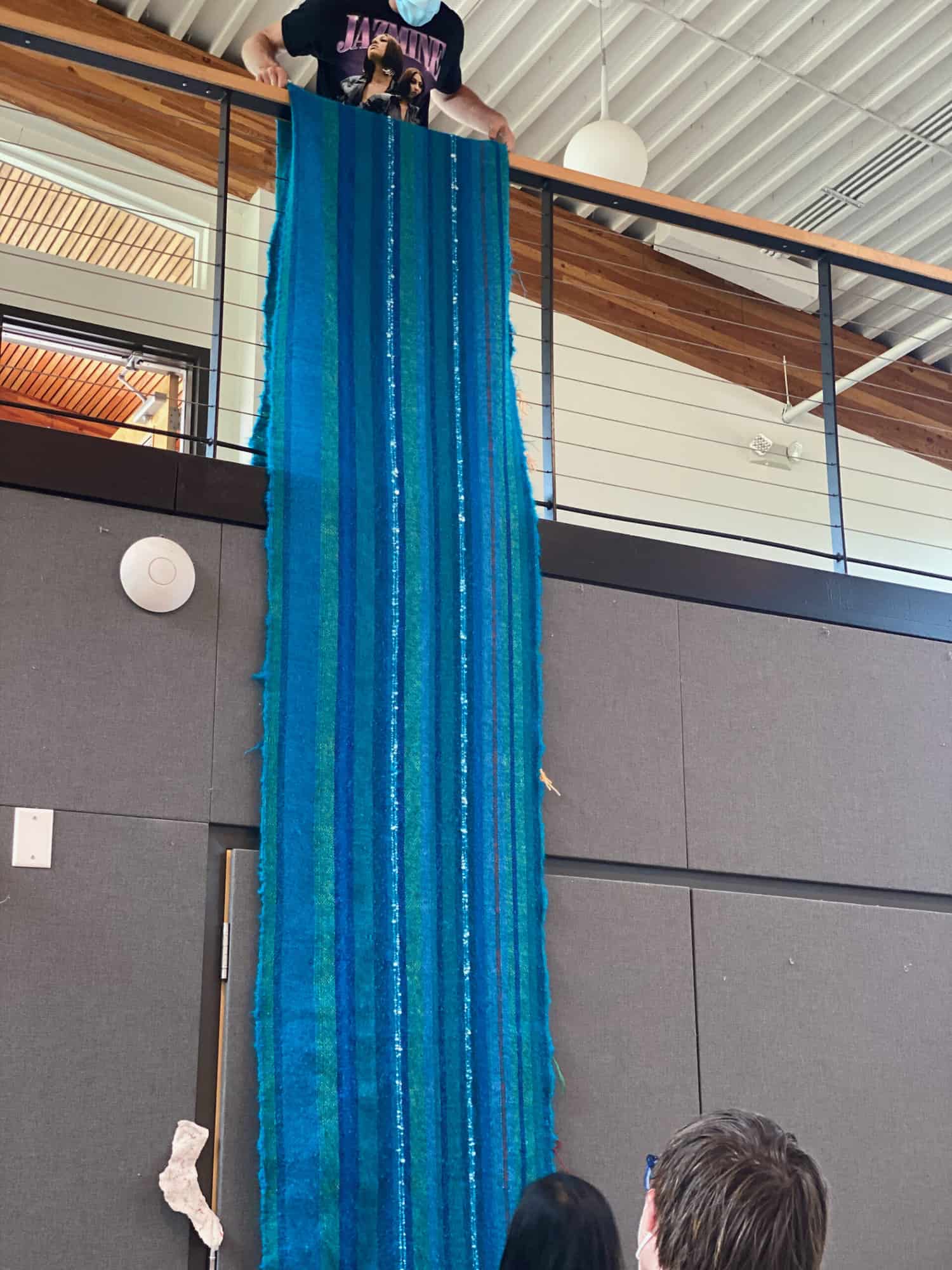
Bettie Zakon-Anderson
Wonderful post Lisa! One of my all-time favorite projects was the “spider weave” we did at Vavstuga. May just have to pull that project out again thanks to your inspiration.
Elisabeth Hill
Hi Bettie, so glad to hear from you! So strange to be a few miles away and unable to gab over fabric. I hope your tribe is well, and once life is “normal” again, let grab a cuppa and catch up. I ❤️ spider weave too – such a good canvas for fun with yarn.
Alice
Wonderful post on one of my favorite families of weaves.
Elisabeth Hill
Hi Alice, Thanks for the comment. Like so many dreamy structures, I feel like I could fall into the cell weave rabbit hole and never weave anything else.
Jill Staubitz
I love everything you create Elisabeth! Your work is so refreshing, and you are so generous with your knowledge. Thank you.
Elisabeth Hill
Hi Jill, Thanks❣️ I love what you’re doing with your online classes. Clear, affordable classes on specific structures (from the comfort of one’s home!) are gifts to weavers.
Mary THOMAS-REILLY
What an inspiring read. It sort of reminds me of one of a comment my first art teachers a project. I kept everything inside the box, she told me I needed to expand outside it. I feel I stay inside the box not only with the drafts but with the suggested fibers. Thank you.
Elisabeth Hill
Hi Mary, Yes! outside the box – perfect for honeycomb. Defy those grids girl😉.
Lepthien Judy
You’re so inventive. I love it. I just wove some m and o towels and love the result. I will have to experiment some more. Xoxo
Elisabeth Hill
Oooh! I love ms and os, what fiber?
Judy Lepthien
Cotton and hemp, some naturally dyed. I just read the feb 7 post on honeycomb again and just love it. thanks. Xoxo
Judy Lepthien
Re read!
Jeannine Martin
Honeycomb and dimity have long been on my bucket list. Thank you for raising them to the top of the list. I want to push the proverbial boundaries of both “structures”. I have hunted and hunted for double dimity drafts and haven’t been very successful. I did correspond with 1 weaver who was not willing to share or sell “her draft” of a fabric she posted on Pinterest. She only said that it took more than 8 shafts to weave. I have more than 8 but she never responded again. I found her attitude unusual in the weaving community. Bt you’ve inspired to weave honeycomb and dimity. Thank you. Your weaving is beautiful. Love the spider weave also.
Elisabeth Hill
Hi Jeannine,
I am looking for a draft double dimity I have seen (and woven) in a Scandi weaving book. I just have to try to remember which one. If I find it, I will let you know. Found it! Treasure trove❣️ Eriksson, Mariana & Lovallius, Kerstin. Warp and Weft.
Shirley Bergert
After years of trying to get your blog posts and giving up, apparently my pandemic gift (besides the sweet and fragile preemie we fostered) is the blog has miraculously begun appearing.on my computer. Yay! Of course I’m completely wowed by your efforts. And I especially love the dimity pattern from Ute. My next big weaving leap will be figuring out how I will weave in Barcelona when we are allowed to again go to Spain. Our daughter lives there and has a 19 month old, Teo, we haven’t seen in a year thanks to covid. We plan to spend a lot of time with them so they need to find space for a loom.Ed reminds me you are still adopted and can come for fancy coffee any time but we are now living on Lake Champlain, not CT.
Elisabeth Hill
Hello Lovely Shirley,
Your life sounds as busy and community-minded as ever, and I am so glad to hear from you. I wanted to say hi when I saw your Waves on Lake Champlain Shawl in HW, but sigh! didn’t.
I am in awe (as usual) of your and Ed’s dedication to the wee babes, and I hope you get to go see your own wee niño soon. AND fancy coffee on Lake Champlaine – yes please!
Charlene
Love the Dimity/Honeycomb image. Is there a book that explains this? Since both Dimity and Honeycomb do not get the attention in the literature that other “Structures” receive?
Elisabeth Hill
Hi Charlene,
I believe that Margie Thompson has written about (and teaches) dimity. I think you can contact her through Complex Weavers. Of course the absolute master is Ute Bargmann, and, I have a collection of drafts that Ute has gathered and interpreted through her years of research, but she isn’t comfortable making her research public. She is a dedicated history buff, and she doesn’t feel that her research is as complete and comprehensive as she’d like.
Claudia Cocco
As always, you are able to articulate a beautiful story and life lesson about fiber, without the stuffiness and constraints of “following” the rules! I’m in love with the Silk City linen you mentioned – it’s a dream to weave.
You are always inspiring!
Elisabeth Hill
Hi Claudia, good to hear from you and great seeing you via Zoom the other day. I’m about to write up the linen for yarnlab. What did you use it for? And what sett did you use. I’m curious because with my last set of samples (what else honeycomb😂)I was getting a lot of breakage. I think I sett too closely because for the defdw it behaved like a charm.
Claudia Cocco
I made a large shawl/wrap (18×98”) and set it at 32epi – 4 per dent in an 8 dent reed. I used pattern 70447 from Handweaving.net.
I first learned of this linen from Jane Stafford – she recommends 24-30 epi. Lone Star Loom Room also carries is, and has customer projects in 28 and 36 epi. It seems very versatile and forgiving!